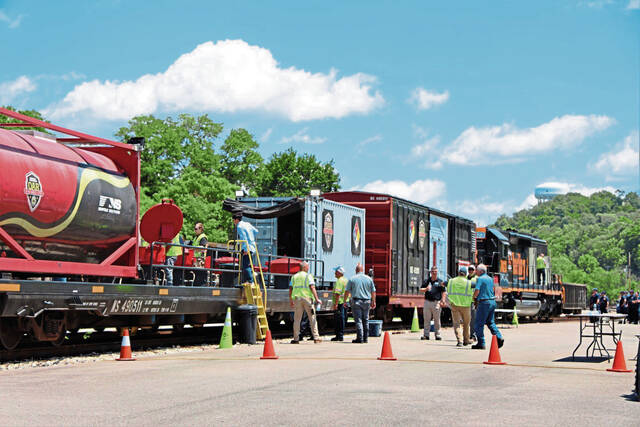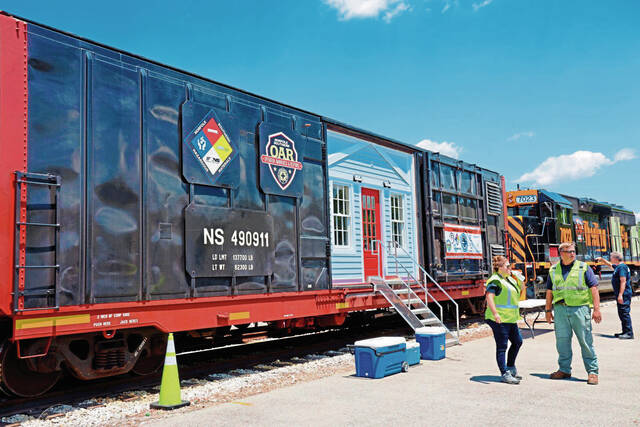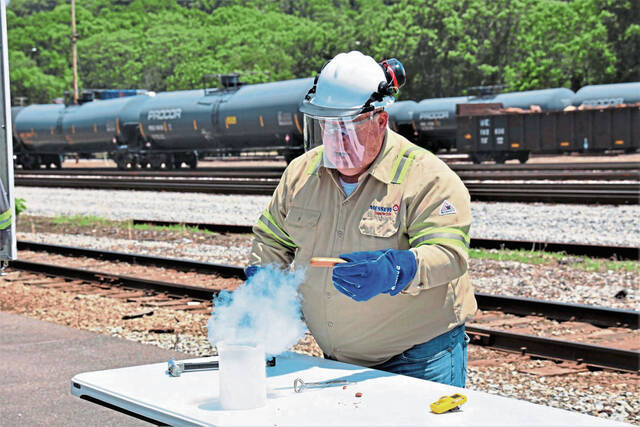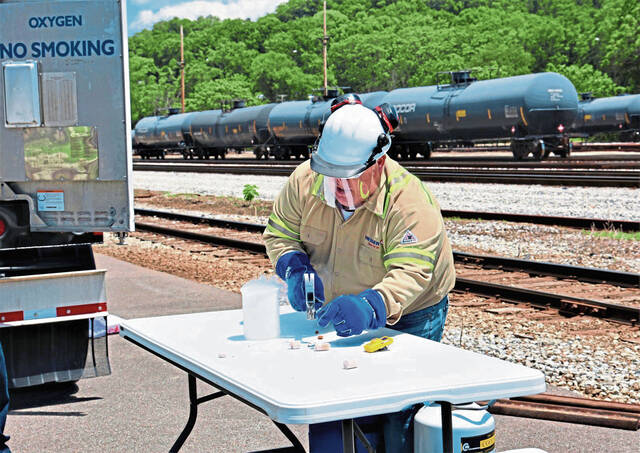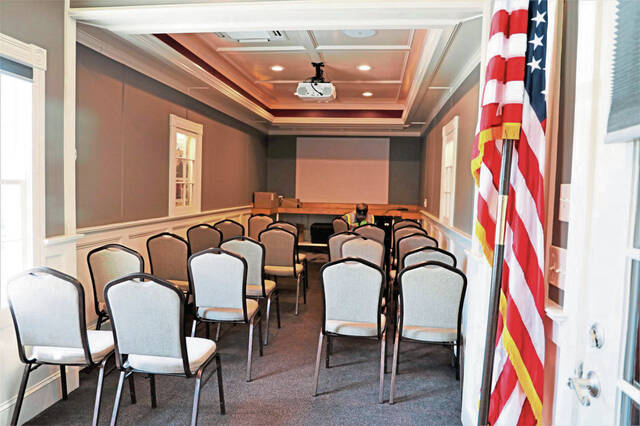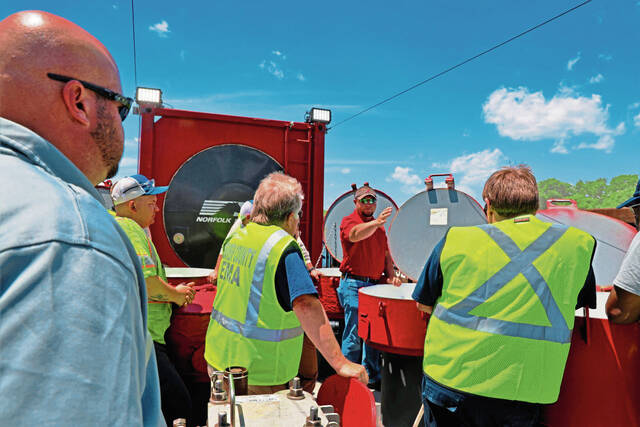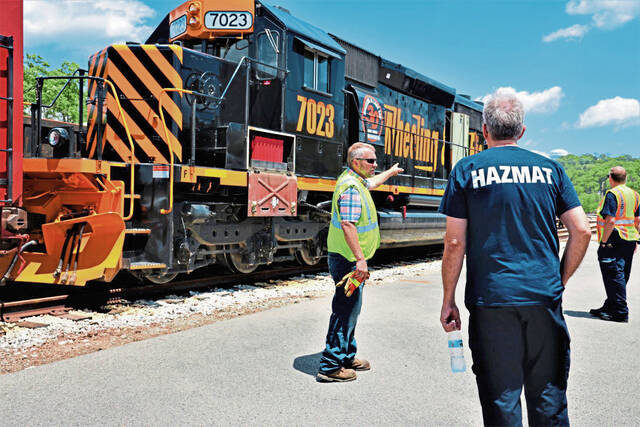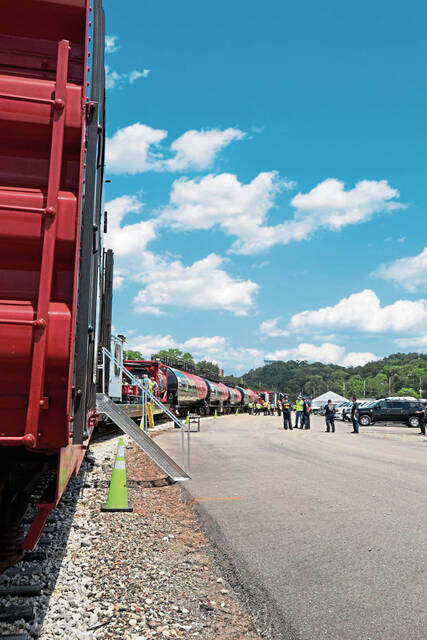HazMat Safety Train gives Western Pa. first responders training on dealing with dangerous derailments
The first emergency responders arriving on the scene where 17 cars of a Norfolk Southern freight train derailed in Harmar in late May had only their training to rely on when making split-second decisions amid the chaos.
Nine of the cars, including tankers, landed in Guys Run, a tributary feeding into the Allegheny River just upriver from three water treatment plants.
On Friday, Norfolk Southern’s HazMat Safety Train — a freight train that has been converted into a moving classroom — rolled into the region with a team of experts on board to provide dozens of local emergency responders with hands-on training on how to deal with incidents involving hazardous materials.
The program at a Wheeling and Lake Erie Railway depot in Carnegie was one of the regularly scheduled sessions Norfolk Southern conducts throughout its service area, said Jon Simpson, manager of hazardous material for Norfolk Southern.
Simpson thinks knowing what to look for when responding to a derailment can play a critical role in how a rail company responds.
“The biggest takeaway from this kind of training is for local first responders to be able to recognize and identify that a hazard exists, not only for their safety, but for the public’s safety,” Simpson said. “If they can recognize that there is a potential hazard and communicate it to us, we can use that information to maximize the way we mobilize the assets that are needed.”
The training session was created through a partnership between Norfolk Southern and its subsidiary Wheeling and Lake Erie Railway, along with CSX and Transcaer, a national hazardous materials response training company.
The safety train is equipped with various types of tanker cars to teach first responders how to visually identify whether the material the cars are carrying poses a threat.
Several cars are equipped with an array of control systems that typically would be found on the top of tankers so emergency personnel can become familiar with the way they operate.
The train also has box cars that have been converted into classrooms, where technical aspects of the training are presented.
The tank cars that derailed in Harmar were carrying a petroleum distillate, a complex blend of hydrocarbons used in making petroleum products, according to railroad officials.
Booms were quickly deployed in the water near the derailment to contain the leak, and the three water treatment plants downriver from the crash were notified.
Even though a damaged, leaking valve on the bottom of a tank car that went into the water wasn’t discovered until three days after the crash, emergency management and water company officials said there was no contamination in their systems from the estimated 3,000 gallons of the distillate leaked into the waterway because most of it was contained in the area cordoned off with booms.
The booms float atop the water and act as a barrier to prevent the chemicals from flowing downriver.
Throughout each of the demonstrations, trainers stressed the need for extreme caution when handling potentially hazardous chemicals.
Mike Murphy, production manager for the Messer gas company in Braddock, used a hot dog to demonstrate the damage that can occur when skin comes into contact with liquid nitrogen.
After placing the hot dog in a beaker of the chemical for a few minutes, it emerged frozen solid enough for him to shatter it with a hammer.
“I think it it can be helpful to actually show people what a chemical can do if your skin is exposed,” he said. “If it freezes a hot dog this quickly, you can easily imagine what it will do to your fingers.”
Tony LaRussa is a TribLive reporter. A Pittsburgh native, he covers crime and courts in the Alle-Kiski Valley. He can be reached at tlarussa@triblive.com.
Remove the ads from your TribLIVE reading experience but still support the journalists who create the content with TribLIVE Ad-Free.


